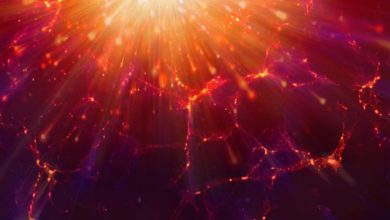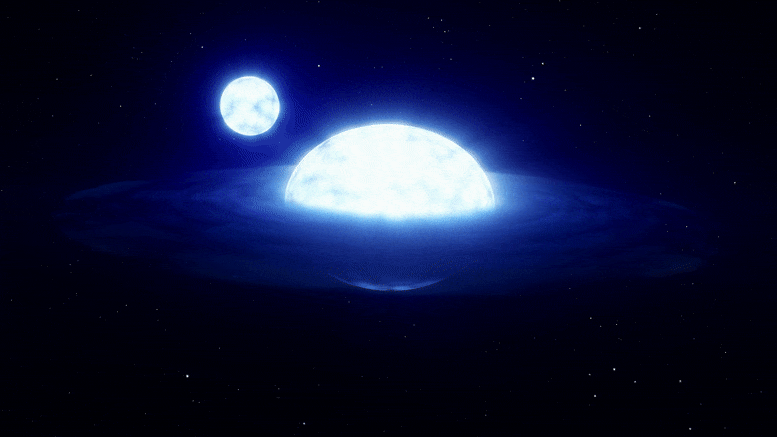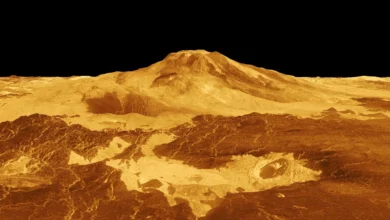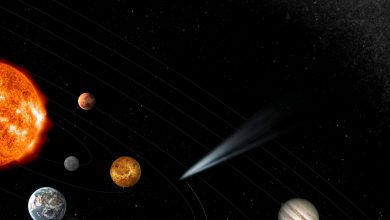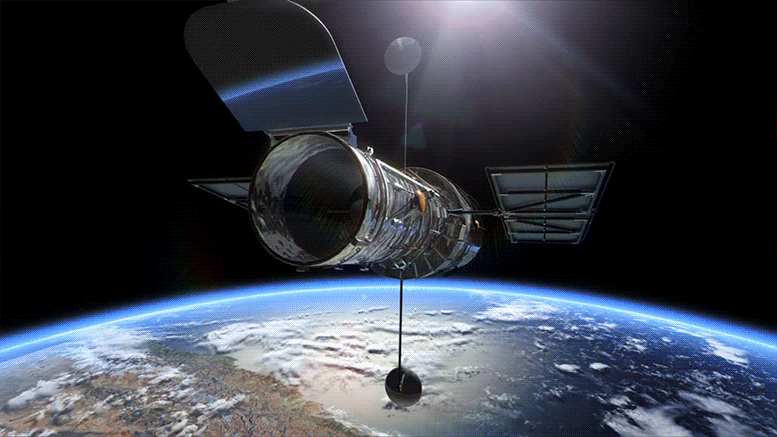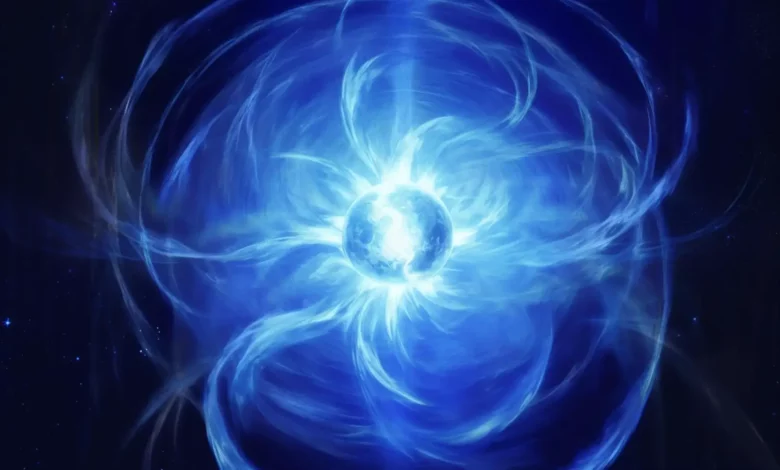
Lead Image: Scientists have discovered a star, HD 45166, which is expected to evolve into a magnetar. This star introduces the new category of massive magnetic helium stars and offers clues to the origins of magnetars, which possess the Universe’s most powerful magnetic fields.
New Type of Star Gives Clues to Mysterious Origin of Magnetars
Magnetars are the strongest magnets in the Universe. These super-dense dead stars with ultra-strong magnetic fields can be found all over our galaxy but astronomers don’t know exactly how they form. Now, using multiple telescopes around the world, including European Southern Observatory (ESO) facilities, researchers have uncovered a living star that is likely to become a magnetar. This finding marks the discovery of a new type of astronomical object — massive magnetic helium stars — and sheds light on the origin of magnetars.
Despite having been observed for over 100 years, the enigmatic nature of the star HD 45166 could not be easily explained by conventional models, and little was known about it beyond the fact that it is one of a pair of stars[1], is rich in helium and is a few times more massive than our Sun.
Using multiple telescopes around the world, including European Southern Observatory (ESO) facilities, researchers have uncovered a living star that is likely to become a magnetar, an ultra-magnetic dead star. This video summarises the discovery. Credit: ESO
“This star became a bit of an obsession of mine,” says Tomer Shenar, the lead author of a study on this object published today in Science and an astronomer at the University of Amsterdam, the Netherlands. “Tomer and I refer to HD 45166 as the ‘zombie star’,” says co-author and ESO astronomer Julia Bodensteiner, based in Germany. “This is not only because this star is so unique, but also because I jokingly said that it turns Tomer into a zombie.”
Having studied similar helium-rich stars before, Shenar thought magnetic fields could crack the case. Indeed, magnetic fields are known to influence the behavior of stars and could explain why traditional models failed to describe HD 45166, which is located about 3000 light-years away in the constellation Monoceros. “I remember having a Eureka moment while reading the literature: ‘What if the star is magnetic?’,” says Shenar, who is currently based at the Centre for Astrobiology in Madrid, Spain.

Astronomers believe that this star will end its life as a magnetar, a compact and highly magnetic stellar corpse. As HD 45166 collapses under its own gravity, its magnetic field will strengthen, and the star will eventually become a very compact core with a magnetic field of around 100 trillion gauss — the most powerful type of magnet in the Universe.
HD 45166 is part of a binary system. In the background, we get a glimpse of HD 45166’s companion, a normal blue star that has been found to orbit at a far larger distance than previously reported.
Shenar and his team set out to study the star using multiple facilities around the globe. The main observations were conducted in February 2022 using an instrument on the Canada-France-Hawaii Telescope that can detect and measure magnetic fields. The team also relied on key archive data taken with the Fiber-fed Extended Range Optical Spectrograph (FEROS) at ESO’s La Silla Observatory in Chile.
Once the observations were in, Shenar asked co-author Gregg Wade, an expert on magnetic fields in stars at the Royal Military College of Canada, to examine the data. Wade’s response confirmed Shenar’s hunch: “Well my friend, whatever this thing is — it is definitely magnetic.”
Shenar’s team had found that the star has an incredibly strong magnetic field, of 43,000 gauss, making HD 45166 the most magnetic massive star found to date.[2] “The entire surface of the helium star has a magnetic field almost 100,000 times stronger than Earth’s,” explains co-author Pablo Marchant, an astronomer at KU Leuven’s Institute of Astronomy in Belgium [see edit].
This observation marks the discovery of the very first massive magnetic helium star. “It is exciting to uncover a new type of astronomical object,” says Shenar, ”especially when it’s been hiding in plain sight all along.”
This video shows an artist’s animation of HD 45166, a massive star recently discovered to have a powerful magnetic field of 43,000 gauss, the strongest magnetic field ever found in a massive star. Intense winds of particles blowing away from the star are trapped by this magnetic field, enshrouding the star in a gaseous shell as illustrated here. Credit: ESO/L. Calçada
Moreover, it provides clues to the origin of magnetars, compact dead stars laced with magnetic fields at least a billion times stronger than the one in HD 45166. The team’s calculations suggest that this star will end its life as a magnetar. As it collapses under its own gravity, its magnetic field will strengthen, and the star will eventually become a very compact core with a magnetic field of around 100 trillion gauss[3] — the most powerful type of magnet in the Universe.
Shenar and his team also found that HD 45166 has a mass smaller than previously reported, around twice the mass of the Sun, and that its stellar pair orbits at a far larger distance than believed before. Furthermore, their research indicates that HD 45166 formed through the merger of two smaller helium-rich stars. “Our findings completely reshape our understanding of HD 45166,” concludes Bodensteiner.
Reference: “A massive helium star with a sufficiently strong magnetic field to form a magnetar” 17 August 2023, Science.
DOI: 10.1126/science.ade3293
Notes
- While HD 45166 is a binary system, in this text HD 45166 refers to the helium-rich star, not to both stars.
- The magnetic field of 43 000 gauss is the strongest magnetic field ever detected in a star that exceeds the Chandrasekhar mass limit, which is the critical limit above which stars may collapse into neutron stars (magnetars are a type of neutron star).
- In this text, a billion refers to one followed by nine zeros and a trillion refers to one followed by 12 zeros.
The team is composed of Tomer Shenar (Anton Pannekoek Institute for Astronomy, University of Amsterdam, the Netherlands [API], now at the Centre for Astrobiology, Madrid, Spain), Gregg Wade (Department of Physics and Space Science, Royal Military College of Canada, Canada), Pablo Marchant (Institute of Astronomy, KU Leuven, Belgium [KU Leuven]), Stefano Bagnulo (Armagh Observatory & Planetarium, UK), Julia Bodensteiner (European Southern Observatory, Garching, Germany; KU Leuven), Dominic M. Bowman (KU Leuven), Avishai Gilkis (The School of Physics and Astronomy, Tel Aviv University, Israel), Norbert Langer (Argelander-Institut für Astronomie, Universitӓt Bonn, Germany; Max Planck Institute for Radio Astronomy, Bonn, Germany), André Nicolas-Chené (National Science Foundation’s National Optical-Infrared Astronomy Research Laboratory, Hawai‘i), Lidia Oskinova (Institut für Physik und Astronomie, Universitӓt Potsdam, Germany [Potsdam]), Timothy Van Reeth (KU Leuven), Hugues Sana (KU Leuven), Nicole St-Louis (Département de physique, Université de Montréal, Complexe des sciences, Canada), Alexandre Soares de Oliveira (Institute of Research and Development, Universidade do Vale do Paraíba, São José dos Campos, Brazil), Helge Todt (Potsdam) and Silvia Toonen (API).

